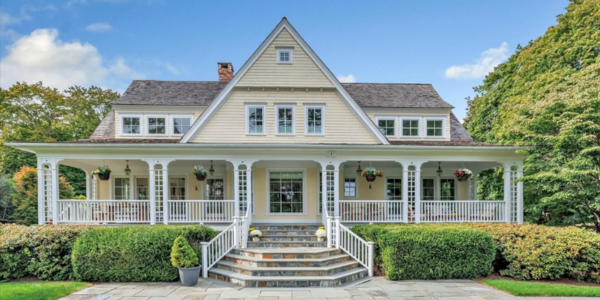R
eal‑estate and hospitality firms are navigating a rapidly shifting risk environment. Workplace norms are evolving, migration is reshaping demographics, and macro‑economic pressures—persistent inflation, volatile tariffs, climbing construction costs, and high borrowing rates—continue to strain budgets. Climate change is altering weather patterns, while catastrophe models are being updated to reflect new risks. Third‑party liability remains a constant threat, with tort law varying across states.
These forces have reshaped the insurance market over the past five years, forcing buyers to rethink program design and pricing strategies.
---
### 2025 Outlook for Real‑Estate Assets
In the second half of 2025, investors are gravitating toward data centers, multifamily, industrial, senior‑living, student housing, hotels, and warehouses. Each asset class carries distinct exposure profiles that owners, developers, and managers must understand.
Lockton’s Q1 2025 market update highlighted four key themes that persist:
1. **Underwriting selectivity** – Insurers are tightening coverage for habitational and hospitality properties in high‑crime, dense urban areas.
2. **Rising liability rates and retentions** – Even as property premiums stabilize, buyers with adverse loss histories or valuation issues face higher costs.
3. **Litigation pressure** – Social‑inflation and “nuclear verdicts” (claims ≥ $10 M) are driving liability premiums upward.
4. **Catastrophe exposure** – Hurricanes, wildfires, floods, and convective storms are increasingly common, stressing carrier loss models.
Other macro‑drivers influencing the market include:
- **Interest rates** – Despite recent Fed cuts, rates remain high, inflating asset values and complicating insurance‑to‑value ratios.
- **Economic inflation** – Rising material and labor costs increase claim severity.
- **Labor market dynamics** – Talent shortages and turnover heighten safety and liability risks.
- **Climate change** – Secondary perils such as wildfire, flood, and severe thunderstorms are becoming more frequent and costly.
---
### Property Market Trends
The property risk landscape has become highly competitive. For occupancies that were previously hard to insure, pricing is falling as 2026 approaches. Even stable, single‑insurer placements are softening.
Current capacity is ample for well‑protected, non‑catastrophe‑exposed assets, which can expect flat to single‑digit rate declines at renewal. Many buyers are seeing double‑digit reductions. Insurers are eager to deploy capital on quality risks with reliable data but are less enthusiastic about incomplete or inconsistent information.
Despite record losses from the January Eaton and Palisades fires, carriers are aggressively pursuing well‑managed risks. Conditions remain favorable for many buyers through 2026, though the market could tighten if loss events spike in the fourth quarter or during the 2026 hurricane season. The soft market benefits those with strong loss experience and proven loss‑control practices.
However, “secondary” perils are a growing concern. In 2024, 27 billion‑dollar disasters caused nearly $183 B in economic damage, the fourth‑costliest year on record. Only five of those events were hurricanes or tropical storms. Flood risk is pervasive, with the July 2025 Texas flood claiming 135 lives and costing $18–$22 B. The National Flood Insurance Program is currently not issuing new policies amid a federal shutdown.
Severe thunderstorms are increasing in frequency and intensity. Swiss Re projects higher losses as urbanization, asset values, and inflation amplify the impact of convective storms. In 2023–24, such events accounted for at least $31 B in insured losses in the first half of 2025.
Wildfire risk remains difficult to place and underwrite, especially after California’s costly fires. Coverage for certain California and remote West Coast or Colorado properties is limited.
To capitalize on the soft market, insureds should provide high‑quality data, implement proactive loss‑control measures, and collaborate closely with brokers to structure programs that match their risk appetite. Successful buyers have achieved rate relief by investing in secondary data validation, improving construction, occupancy, protection, and exposure (COPE) information, or deploying targeted loss‑prevention initiatives. Insurers have offered enhanced terms and expanded limits to those demonstrating superior risk management.
---
### Liability Landscape
While property coverage improves, liability challenges intensify. Rising litigation, volatile loss valuations, and new exclusions complicate coverage.
Primary and excess casualty lines remain constrained, especially for hospitality, habitational, and entertainment risks. Insurers are adding exclusions that limit coverage, including:
- Abuse/molestation
- Assault and battery
- Firearms
- Habitability
- Liquor liability
- Cyber carve‑outs
Emerging exclusions target PFAS (“forever chemicals”), mold, and Legionella. Underwriters are also scrutinizing labor and safety protocols, guest security, and premises liability—still a major loss driver.
Nuclear verdicts and third‑party litigation funding (TPLF) are inflating casualty premiums. TPLF, largely unregulated federally, attracts venture capital and fuels larger settlements. Insurers have reduced excess coverage limits from $25 M to $15 M or $10 M, prompting many buyers to purchase less excess to avoid costly lawsuits.
Coverage gaps, affordability, and lender requirements are pressing concerns. Freddie Mac and Fannie Mae reject many exclusions, so buyers must secure waivers or provide personal guarantees or escrows.
Tort reform in Florida (2023) and Georgia (2024) aims to curb excessive litigation and lower insurance costs. Other states—Texas, South Carolina, Louisiana, Alabama, Iowa, Missouri—are pursuing similar reforms, though results will take years.
Insurers now demand robust loss‑control programs, well‑drafted contracts, property maintenance plans, and onsite security. Brokers who can help embed these practices are essential.
---
### Specialty Coverages
As carriers tighten underwriting, specialty coverages become valuable:
- **SAM and A&B policies** – Essential where general liability insurers exclude or limit these exposures.
- **Environmental insurance** – Pollution liability scrutiny is rising, especially for redevelopment and aging portfolios.
- **Active‑assailant coverage** – Protects against weapons or vehicle attacks, including mass shootings and stabbings.
Professional and executive risk remains a focus. AI‑driven pricing tools and alleged price‑fixing have constrained antitrust coverage. Greenwashing claims are increasing, prompting some markets to exclude such exposures.
Private management liability is competitive, but profitability is eroding for some carriers, leading to premium hikes. Private real‑estate firms face restrictive terms due to complex ownership structures. Insurers offering omnibus insured clauses or custom wording for special‑purpose entities can mitigate coverage gaps.
General partnership liability—combining D&O and E&O for investment companies—remains favorable for financially stable firms with good loss histories. Underwriters keep rates flat and allow policyholders to tailor coverage.
---
### Professional Liability / E&O
Standard professional liability rates are stable or declining, but real‑estate exposure is growing. Carrier capacity is abundant, yet claims highlight the need for:
- Clear policy language covering antitrust violations.
- Adequate limits amid rising class‑action frequency and attorney fees.
Specialist brokers can tailor coverage to specific risks.
---
### Employment Practices Liability (EPL)
EPL markets are modestly stabilizing. Firms with good claims histories enjoy flat or reduced rates, but conditions in California, New York, New Jersey, and Florida remain challenging. Real‑estate employers face higher risk due to high turnover, surveillance and biometric use, and decentralized workforces. Tenant discrimination policies can offer lower retentions than standard EPL.
Other risks include AI bias in hiring, evolving harassment guidelines, class‑action suits involving high‑paid employees, new disclosure laws, and scrutiny of biometric data usage.
---
### Cyber and Crime
Cyber insurance remains competitive, with many buyers renewing at modest rate decreases. Policies should cover more than social engineering; invoice‑manipulation claims are rising. Traditional cyber policies often exclude non‑subsidiary entities, so explicit endorsements or tailored language are necessary.
Crime insurance is profitable, with rates stable or slightly down. Social engineering fraud remains a top concern, though losses have stabilized. Carriers assess payment controls and limits, and many include authentication provisions that can limit coverage. Lockton is working with underwriters to develop industry‑leading language that blends theft risk with social engineering and other property exposures.
---
### Pitfalls and Risks
Real‑estate businesses should avoid:
- **Lack of transparency** – Withholding financial details hampers risk assessment.
- **AI disclosure** – Failure to disclose AI use can lead to uncovered losses.
- **Greenwashing** – Overstating sustainability can trigger regulatory or legal action.
- **Delayed claim notification** – Prompt reporting ensures defense costs are covered and reduces coverage disputes.
---
### Renewal Strategies
To secure optimal coverage, Lockton recommends:
1. **Early engagement** – Start renewal talks ≥ 120 days before policy end.
2. **Analytics leverage** – Use catastrophe modeling, valuation benchmarking, and portfolio analysis to negotiate terms.
3. **Highlight mitigation** – Demonstrate effective loss‑control, incident response, and litigation strategies.
4. **Explore alternative risk transfer** – Captives, structured excess, and parametric solutions for flood, wildfire, and hail can supplement traditional insurance.
5. **Consider stand‑alone coverages** – For hard‑to‑cover liabilities like abuse/molestation and assault/battery.
6. **Partner with experienced brokers** – Specialist advice on policy language and structure improves renewal outcomes.
---
For more information or assistance managing your insurance program, visit our real‑estate page or contact a member of the Lockton Real‑Estate team.















